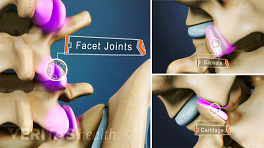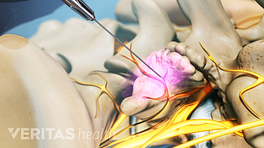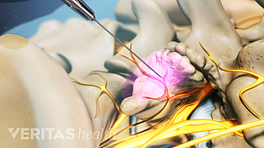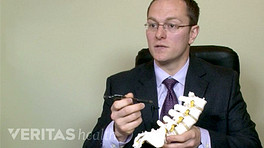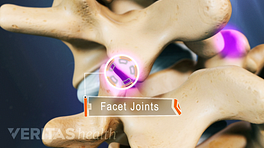A facet joint injection may be done to help diagnose the facet joints as the source of the patient's pain, as well as to provide pain relief.
Facet joints are pairs of small joints in between the vertebrae in the back of the spine. These joints have opposing surfaces of cartilage, which limits friction between the bones. The joint is surrounded by a capsule filled with a small amount of synovial fluid. The synovial fluid acts as an additional lubricant to reduce friction between bones that rub together.
Healthy facet joints support the spine while also allowing a wide range of twisting and bending motion. These joints may become inflamed and painful due to a variety of conditions, such as osteoarthritis, degenerated discs, spinal stenosis, or from a trauma such as a car accident.
A facet joint injection procedure begins with the patient laying face down on a table, while a small area of skin and tissue over the facet joint is treated with a local anesthetic to numb the area.
The physician uses X-ray guidance, called fluoroscopy, to direct a small needle into the facet joint. Contrast dye is injected to confirm that the needle is positioned correctly in the facet joint and that medication is contained inside the joint.
Following this confirmation, a mixture of anesthetic, such as lidocaine, and anti-inflammatory medication, such as cortisone, is then slowly injected into the joint.
As with many spinal injection procedures, facet joint injections work better for some patients than for others. Often, a facet joint injection is combined with physical therapy to rehabilitate the back.
In This Article:
- Cervical, Thoracic, and Lumbar Facet Joint Injections
- Facet Joint Injection Procedure
- Facet Joint Injection Potential Risks and Complications
- Facet Joint Injections Procedure Video

